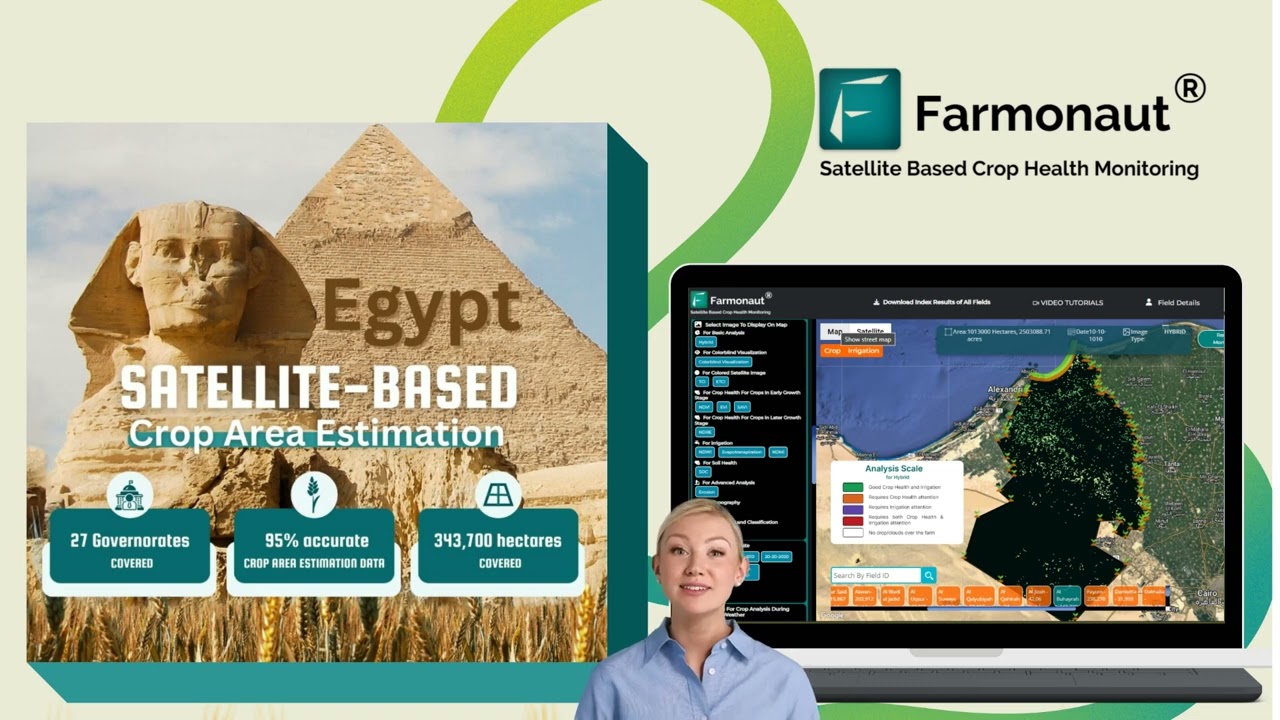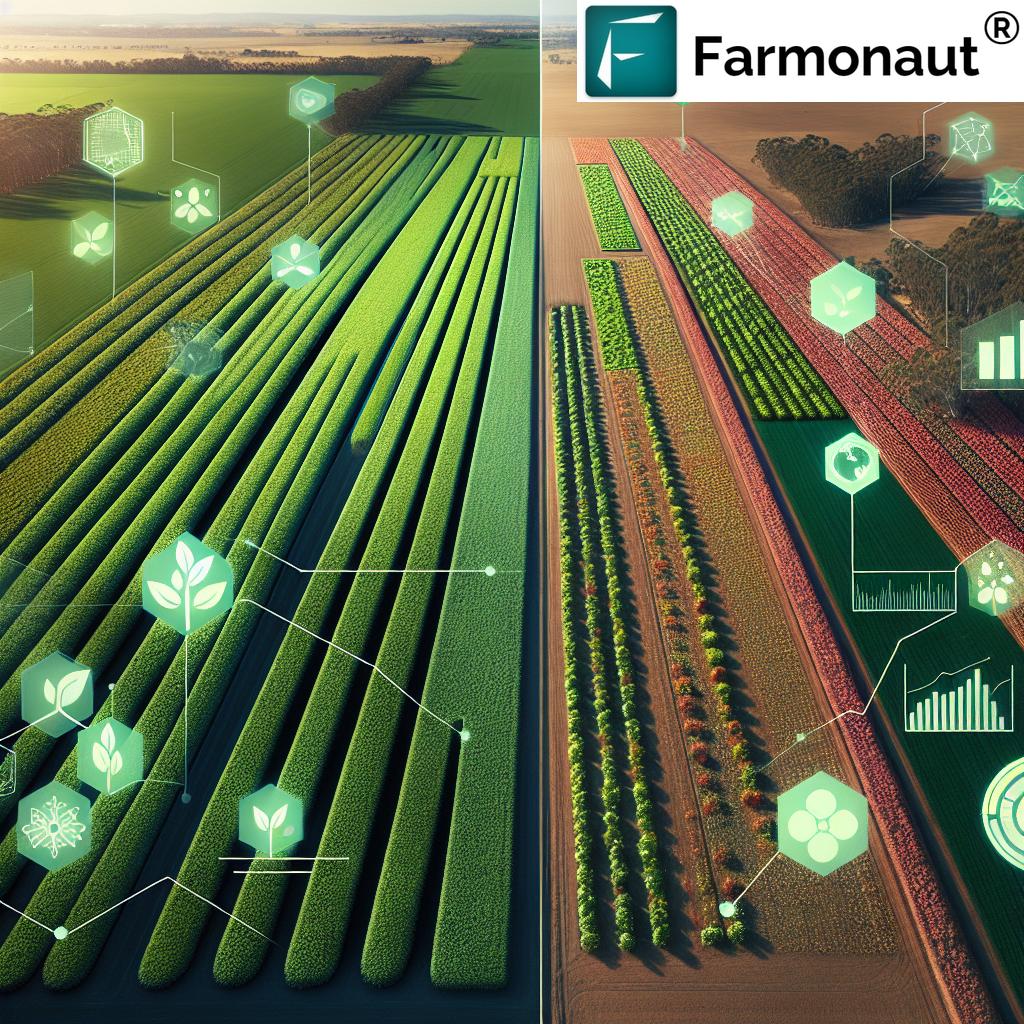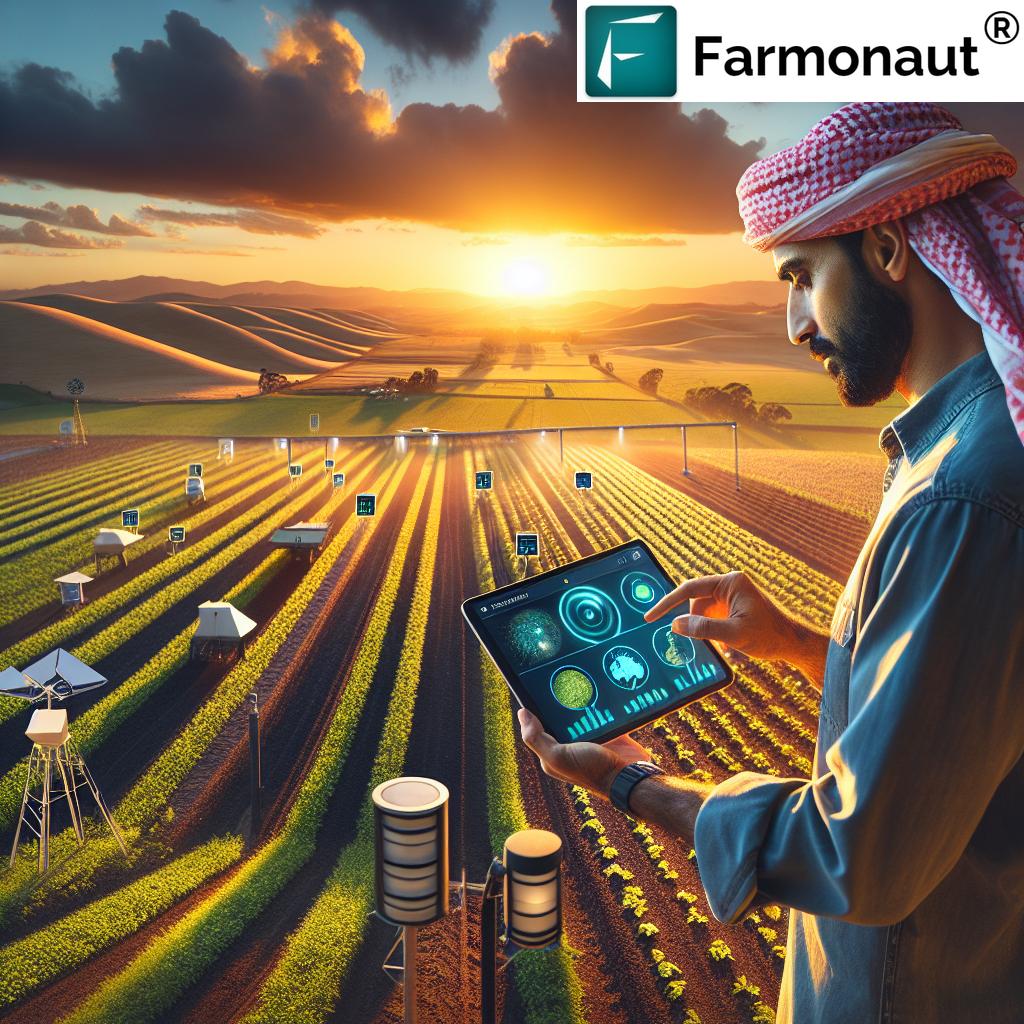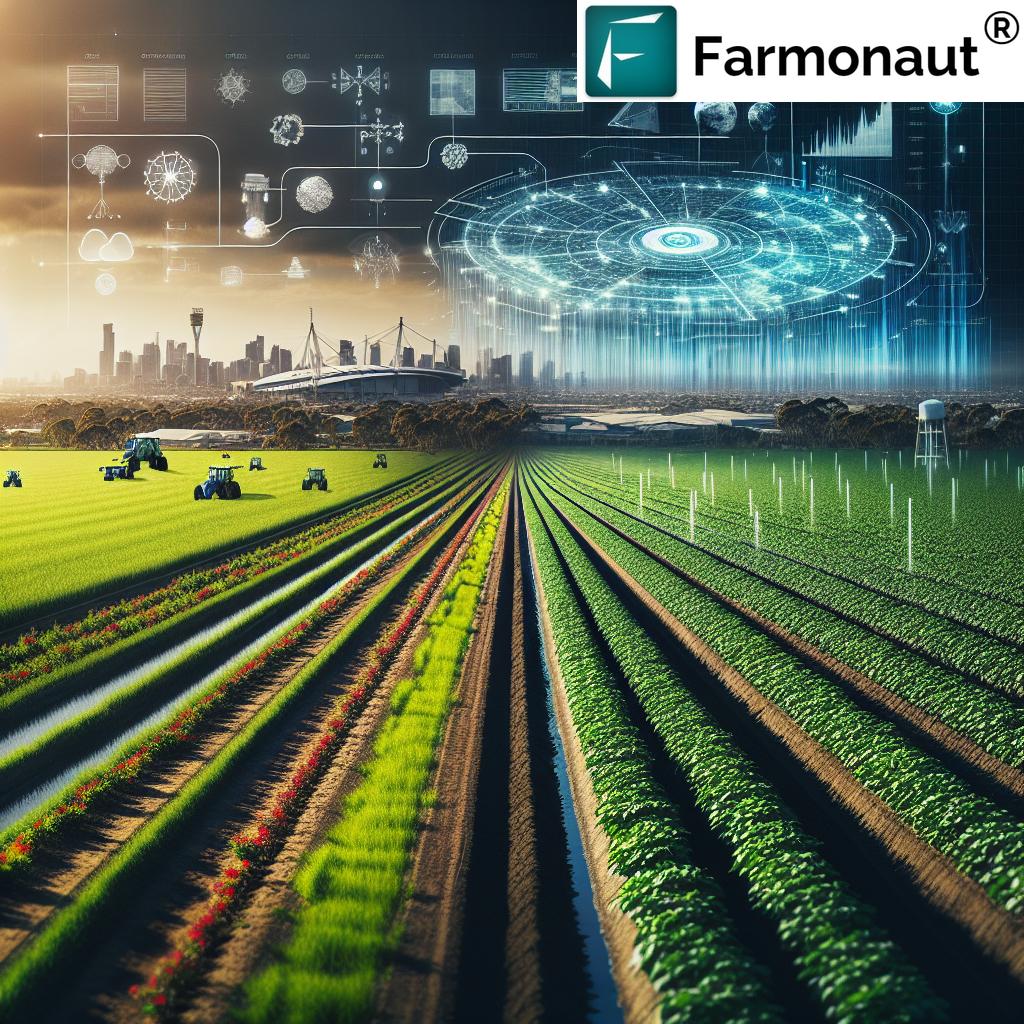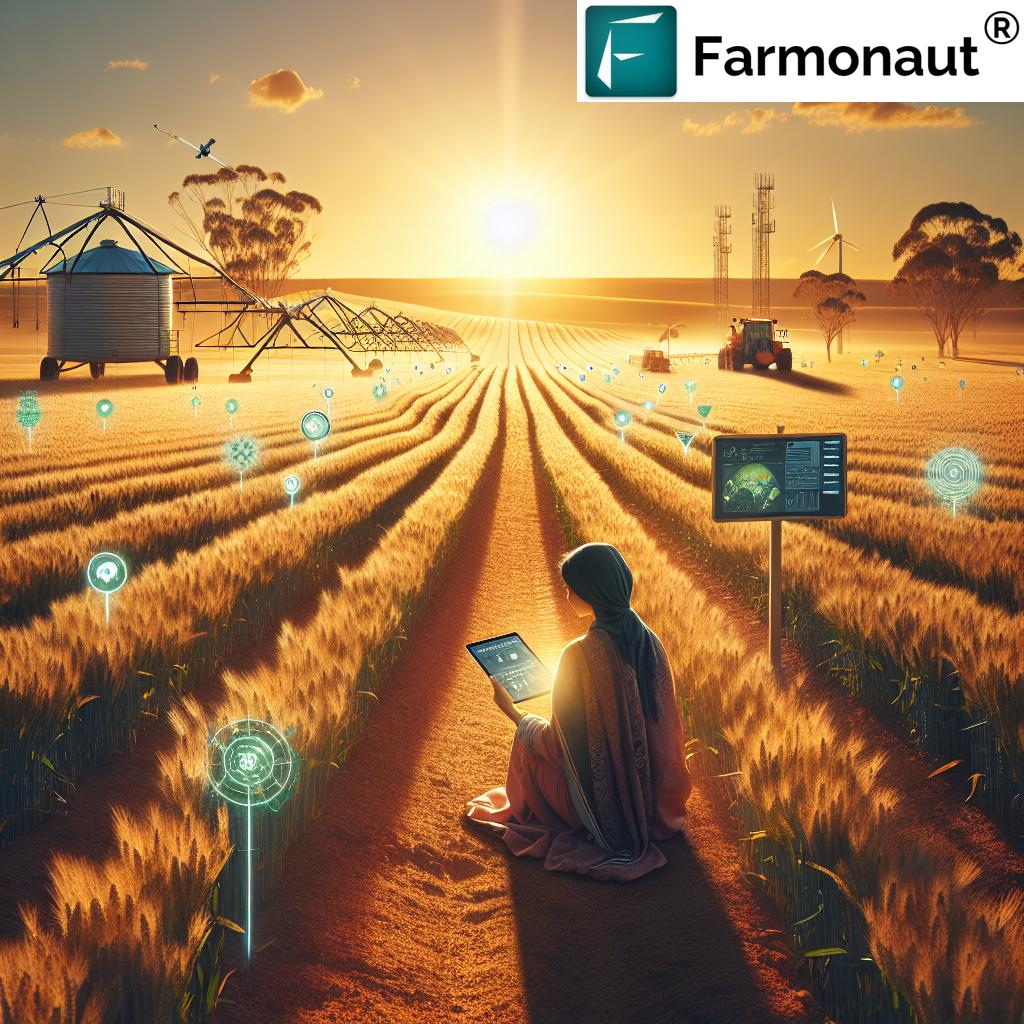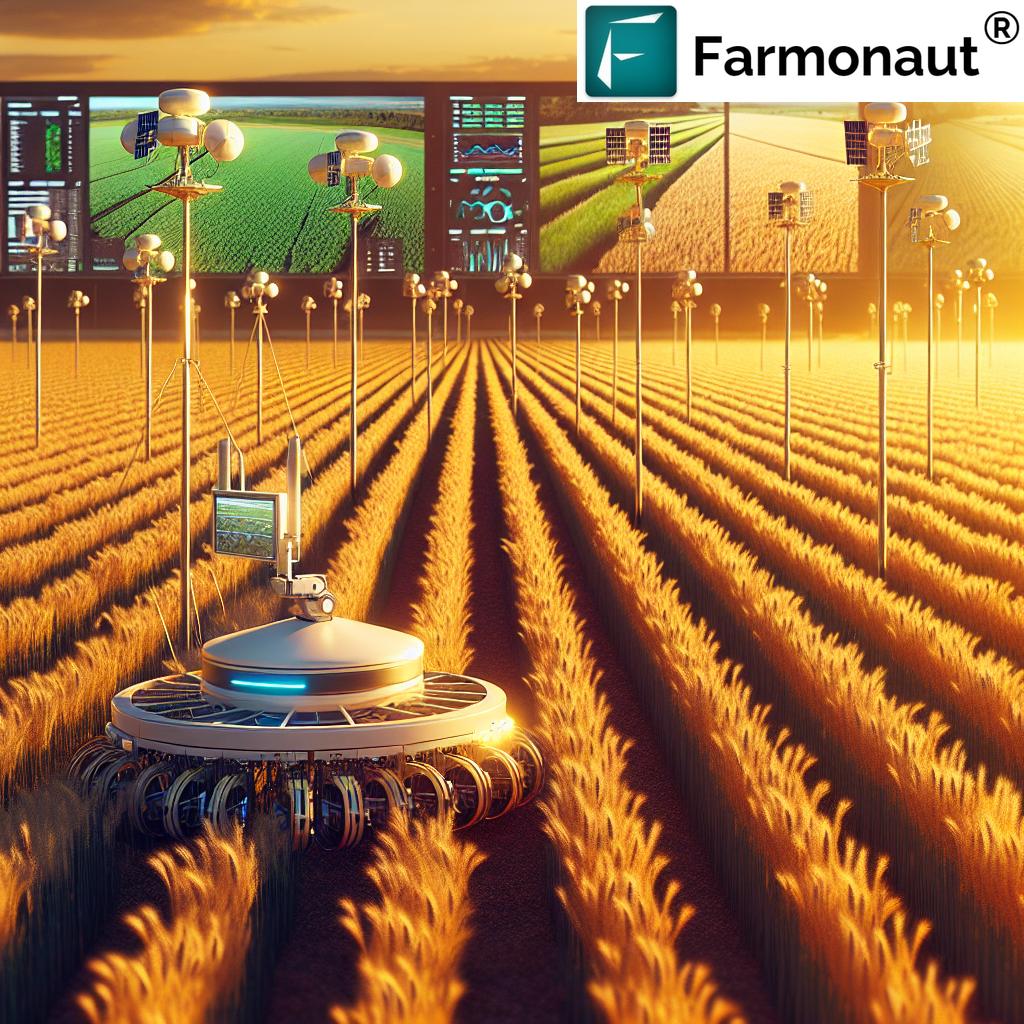Unlocking Australia’s Sesame Industry: Innovative Research Drives Agricultural Growth and Export Opportunities
“Australia’s $2 million investment in sesame research aims to boost the industry over a 5-year period.”
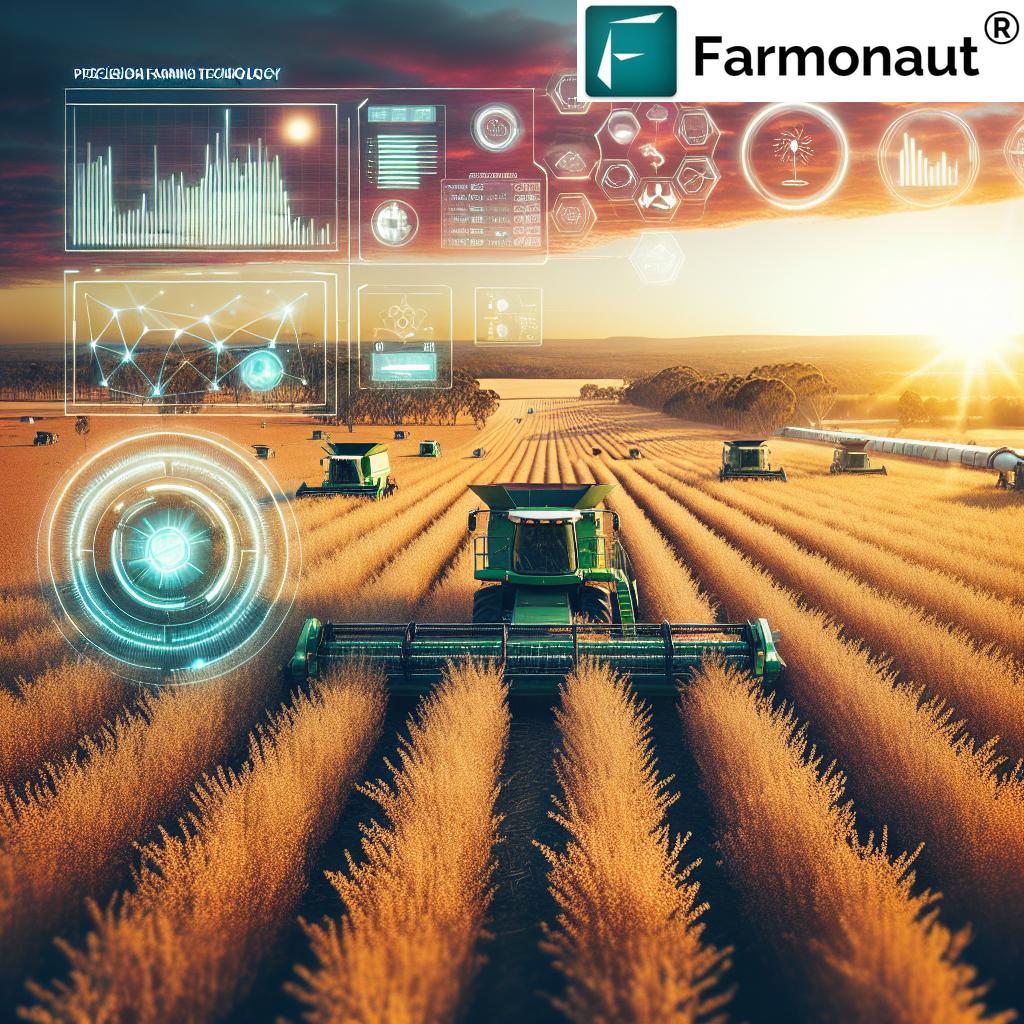
We are witnessing an exciting era of agricultural innovation in Australia, with the Australian sesame industry poised for significant growth. As experts in agricultural technology and remote sensing, we at Farmonaut are thrilled to explore the potential of this emerging high-value crop and its impact on the future of Australian farming. In this comprehensive blog post, we’ll delve into the recent $2 million investment in national research and how it’s set to transform sesame production in Australia.
The Rise of Sesame: A New Frontier for Australian Agriculture
Sesame, a crop with a rich history dating back thousands of years, is now emerging as a promising addition to Australia’s agricultural landscape. Known for its versatility and nutritional value, sesame seeds and oil are in high demand globally, presenting a unique opportunity for Australian farmers to diversify their crop portfolios and tap into lucrative markets.
The recent $2 million investment in a five-year national research program marks a significant milestone for the Australian sesame industry. This initiative aims to address key sesame cultivation challenges and unlock the crop’s potential across various regions of the country. Let’s explore the main objectives and focus areas of this groundbreaking research:
- Developing crop agronomy for optimal yields
- Creating specialized machinery for efficient planting and harvesting
- Improving sesame seed processing methods
- Breeding new sesame varieties suited to southern Australia’s climate
- Integrating sesame into existing broadacre cropping systems
Innovative Research Initiatives Driving Industry Growth
The five-year research program is set to revolutionize sesame farming techniques in Australia. By focusing on key areas such as crop protection, nutrient management, and water-use efficiency, researchers aim to overcome the challenges that have historically limited sesame cultivation in the country.
One of the most exciting aspects of this research is the development of new sesame varieties for southern Australia. These varieties are being bred to have shorter growing seasons and non-shattering characteristics, making them more suitable for the diverse climatic conditions found across the country. This breakthrough could potentially open up vast new areas for sesame cultivation, significantly expanding the industry’s reach and production capacity.
Overcoming Sesame Cultivation Challenges
Sesame cultivation in Australia faces several unique challenges that the research program aims to address. These include:
- Climate adaptation: Developing varieties that can thrive in Australia’s varied climate zones
- Mechanization: Creating specialized machinery for efficient planting and harvesting
- Pest and disease management: Identifying and mitigating threats specific to Australian growing conditions
- Water management: Optimizing irrigation techniques for water-scarce environments
- Soil health: Developing sustainable nutrient management practices
By tackling these challenges head-on, the research program aims to establish sesame as a viable and profitable crop for Australian farmers. This comprehensive approach to agricultural research initiatives demonstrates Australia’s commitment to innovation and sustainable farming practices.
Enhancing Crop Agronomy for Optimal Yields
A key focus of the research program is optimizing crop agronomy for optimal yields in sesame production. This involves a multifaceted approach that combines traditional agricultural knowledge with cutting-edge technology and data-driven insights.
At Farmonaut, we understand the importance of precise crop management in achieving maximum yields. Our satellite-based farm management solutions can play a crucial role in supporting farmers as they adopt sesame cultivation. By providing real-time crop health monitoring and AI-based advisory systems, we empower farmers to make informed decisions about irrigation, fertilizer usage, and pest management.
The research program is exploring various agronomic practices tailored to sesame cultivation, including:
- Optimal planting densities and row spacing
- Nutrient requirements and fertilization strategies
- Weed management techniques
- Irrigation scheduling and water-use efficiency
- Crop rotation benefits and impacts on soil health
By fine-tuning these agronomic practices, Australian farmers can maximize their sesame yields while minimizing resource inputs, leading to more sustainable and profitable farming operations.
Integrating Sesame into Broadacre Cropping Systems
One of the most promising aspects of sesame cultivation in Australia is its potential integration into existing broadacre cropping systems. This approach not only diversifies farm income but also provides numerous agronomic benefits to the overall farming system.
Researchers are exploring how sesame can fit into crop rotations with traditional Australian crops such as wheat, barley, and canola. The benefits of integrating sesame into these systems include:
- Improved soil health through diversified root systems
- Enhanced pest and disease management through crop rotation
- Increased farm resilience to market fluctuations
- Potential for off-season income generation
- Improved water and nutrient use efficiency across the farming system
“Global sesame demand is rising, prompting Australia to reduce imports and target the international market.”
As experts in remote sensing and agricultural technology, we at Farmonaut recognize the importance of data-driven decision-making in successful crop integration. Our advanced satellite imagery and AI-powered analytics can help farmers monitor their sesame crops alongside traditional crops, ensuring optimal resource allocation and management across the entire farm.
Explore Farmonaut’s API for advanced agricultural insights
Developing Specialized Machinery for Sesame Cultivation
One of the critical aspects of establishing a successful Australian sesame industry is the development of specialized machinery tailored to the unique characteristics of the crop. The research program is investing significant resources into creating innovative equipment for both planting and harvesting sesame, addressing the specific needs of Australian farmers.
Key areas of machinery development include:
- Precision planting equipment: Designed to handle the small sesame seeds and ensure optimal spacing and depth
- Specialized harvesters: Capable of efficiently collecting sesame seeds while minimizing losses due to shattering
- Post-harvest processing machinery: Equipment for cleaning, sorting, and grading sesame seeds to meet market standards
- Adaptable attachments: Modifications to existing farm machinery to accommodate sesame cultivation alongside traditional crops
The development of this specialized machinery is crucial for scaling up sesame production and making it a viable option for large-scale farmers across Australia. By addressing the unique challenges of sesame cultivation through innovative equipment design, the research program is laying the foundation for a thriving and efficient industry.
Improving Sesame Seed Processing Methods
Another critical aspect of the research program is the improvement of sesame seed processing methods. Efficient and effective processing is essential for maintaining seed quality, meeting market standards, and maximizing the value of the crop. Researchers are focusing on several key areas to enhance processing techniques:
- Developing gentle handling methods to preserve seed integrity
- Optimizing cleaning and sorting processes to remove impurities
- Exploring innovative drying techniques to maintain seed quality
- Investigating packaging solutions for extended shelf life
- Researching value-added processing methods for sesame oil and other products
By improving these processing methods, the Australian sesame industry can ensure that its products meet the highest quality standards, opening up opportunities in premium markets both domestically and internationally.
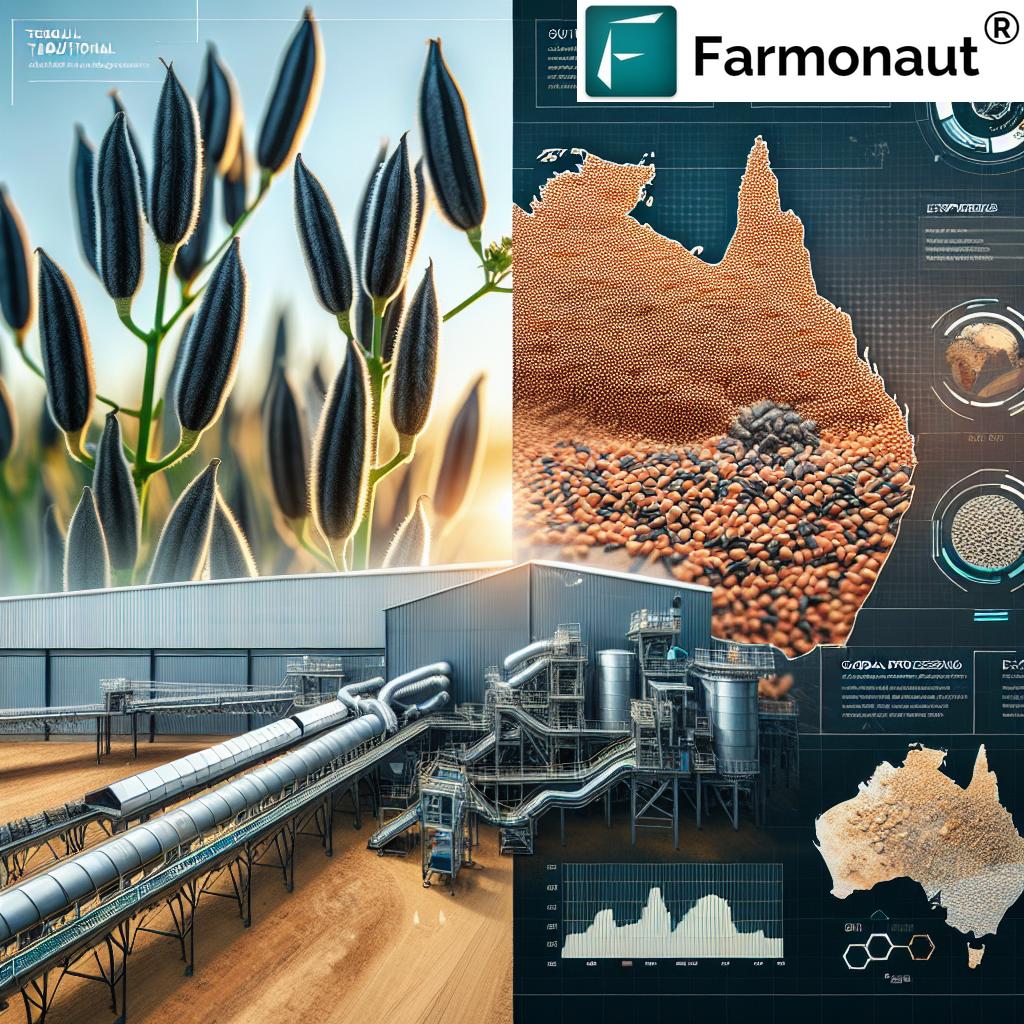
The Role of Technology in Advancing Sesame Cultivation
As we at Farmonaut understand, technology plays a crucial role in modern agriculture. The sesame research program is leveraging various technological advancements to enhance cultivation practices and improve overall productivity. Some key technologies being utilized include:
- Remote sensing: Satellite imagery and drone technology for crop monitoring and yield estimation
- Precision agriculture: GPS-guided machinery for precise planting, fertilization, and harvesting
- Data analytics: Advanced algorithms for analyzing crop performance and predicting optimal management strategies
- Climate modeling: Sophisticated weather prediction tools to inform planting and harvesting decisions
- Genetic mapping: Advanced breeding techniques to develop improved sesame varieties
Farmonaut’s satellite-based farm management solutions align perfectly with these technological advancements. Our platform provides valuable services such as real-time crop health monitoring, AI-based advisory systems, and resource management tools, all of which can be instrumental in optimizing sesame cultivation.
Explore Farmonaut’s API Developer Docs for integration possibilities
Market Opportunities and Export Potential
The global demand for sesame is on the rise, presenting significant opportunities for the Australian sesame industry. As the research program progresses and production scales up, Australia is well-positioned to tap into lucrative export markets. Key factors driving this potential include:
- Growing global awareness of sesame’s nutritional benefits
- Increasing demand for plant-based proteins and oils
- Rising popularity of Asian and Middle Eastern cuisines in Western countries
- Australia’s reputation for high-quality agricultural products
- Potential for value-added sesame products in international markets
By focusing on producing high-quality sesame and developing efficient processing methods, Australia can position itself as a premium supplier in the global market, reducing its reliance on imports and generating significant export revenue.
Environmental and Sustainability Considerations
As we navigate the challenges of climate change and environmental sustainability, the sesame research program is placing a strong emphasis on developing environmentally friendly cultivation practices. Some key sustainability initiatives include:
- Water conservation: Developing drought-tolerant varieties and efficient irrigation systems
- Soil health: Promoting practices that enhance soil structure and biodiversity
- Integrated pest management: Reducing reliance on chemical pesticides through biological control methods
- Carbon sequestration: Investigating sesame’s potential for carbon capture in agricultural systems
- Biodiversity: Exploring sesame’s role in supporting pollinators and beneficial insects
At Farmonaut, we understand the importance of sustainable farming practices. Our platform’s carbon footprint tracking feature can help sesame farmers monitor and reduce their environmental impact, aligning with the industry’s sustainability goals.
Projected Growth and Impact on Australian Agriculture
The investment in sesame research is expected to have a significant impact on Australian agriculture over the coming years. Let’s take a look at the projected growth and potential outcomes of this initiative:
| Year | Estimated Sesame Production (tonnes) | Projected Export Value (AUD millions) | Number of Farmers Adopting Sesame Cultivation | Research Milestones Achieved |
|---|---|---|---|---|
| 2023 | 500 | 2.5 | 50 | Initial variety trials completed |
| 2024 | 1,500 | 7.5 | 150 | Prototype machinery developed |
| 2025 | 5,000 | 25 | 500 | New varieties released for commercial use |
| 2026 | 15,000 | 75 | 1,500 | Optimized processing methods implemented |
| 2027 | 30,000 | 150 | 3,000 | Full integration into broadacre systems achieved |
These projections highlight the potential for rapid growth in the Australian sesame industry, with significant increases in production, export value, and farmer adoption over the five-year research period.
Challenges and Future Directions
While the prospects for the Australian sesame industry are promising, there are still challenges to overcome and areas for future research and development. Some key considerations include:
- Adapting to climate variability and extreme weather events
- Developing resilient supply chains for both domestic and international markets
- Addressing potential labor shortages in rural areas
- Ensuring compliance with international quality and safety standards
- Continuing investment in research and development beyond the initial five-year program
As the industry evolves, ongoing collaboration between researchers, farmers, and technology providers like Farmonaut will be crucial in addressing these challenges and unlocking the full potential of sesame cultivation in Australia.
Conclusion: A Bright Future for Australian Sesame
The $2 million investment in sesame research marks the beginning of an exciting new chapter for Australian agriculture. By addressing key sesame cultivation challenges, developing innovative technologies, and focusing on sustainability, Australia is poised to become a significant player in the global sesame market.
As experts in agricultural technology, we at Farmonaut are excited to support this emerging industry with our advanced satellite-based farm management solutions. By combining cutting-edge research with innovative technology, Australian farmers can unlock the full potential of sesame cultivation, diversifying their crops and tapping into lucrative new markets.
The future of the Australian sesame industry looks bright, promising increased agricultural productivity, new export opportunities, and a more resilient farming sector. As this research program progresses, we look forward to seeing sesame fields flourish across the Australian landscape, contributing to a more diverse and prosperous agricultural future.
FAQ Section
Q1: What makes sesame an attractive crop for Australian farmers?
A1: Sesame is attractive due to its high market value, drought tolerance, and potential for integration into existing farming systems. It offers diversification opportunities and aligns with the growing global demand for plant-based proteins and oils.
Q2: How long will it take for the Australian sesame industry to become commercially viable?
A2: Based on the research program’s timeline, significant commercial viability is expected within 3-5 years, with early adopters potentially seeing returns sooner as new varieties and technologies become available.
Q3: What role can technology play in sesame cultivation?
A3: Technology, such as Farmonaut’s satellite-based solutions, can provide real-time crop health monitoring, precision agriculture tools, and data-driven insights to optimize sesame cultivation and improve yields.
Q4: How will the sesame research program benefit rural communities?
A4: The program is expected to create new job opportunities, stimulate economic growth in rural areas, and provide farmers with a valuable additional crop option, enhancing the overall resilience of rural communities.
Q5: What are the main export markets for Australian sesame?
A5: While specific markets will develop as production scales up, potential key markets include Asian countries, the Middle East, and Western nations with growing demand for sesame products in health food and culinary applications.




